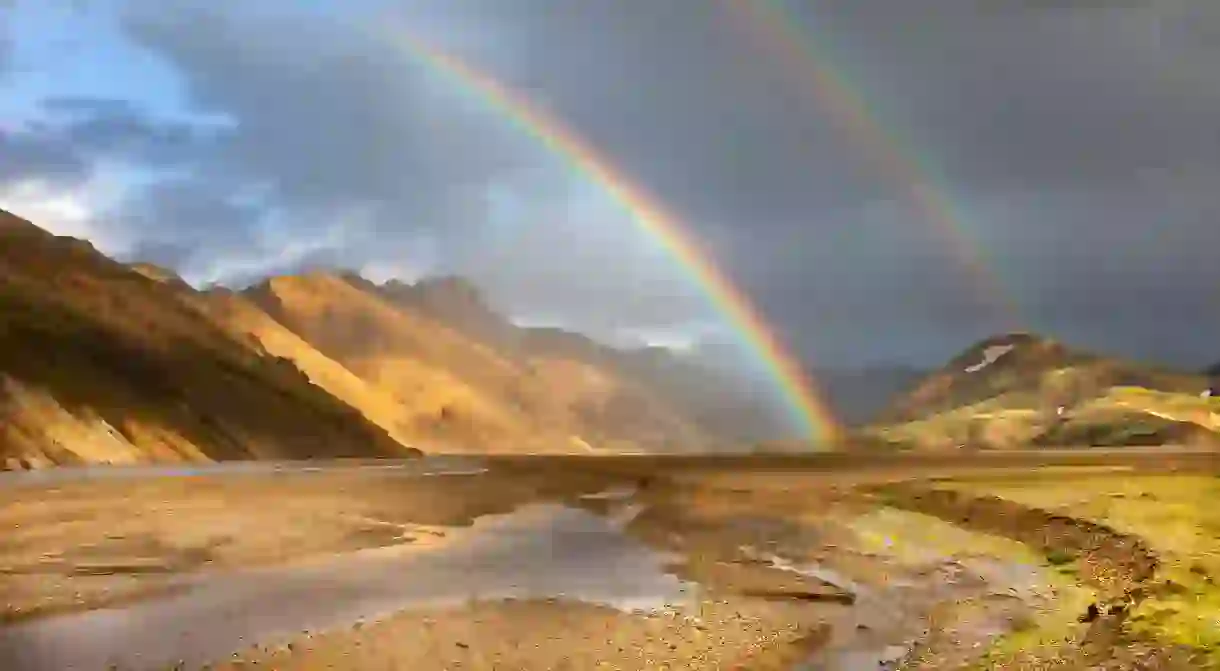Natural Phenomena You Have To See In Iceland

The Icelandic people often talk about elves, trolls and “hidden people” inhabiting the land. It only seems fitting: Iceland is magical. This island is densely packed with some of Mother Nature’s most dazzling sites. Get out and explore the Land of Fire and Ice with our list of must-sees.
You can now book your exclusive Icelandic adventure with us – our five-day Iceland trip takes in the stunning landscapes of this spectacular island, all organised by Culture Trip.
The Separation of the North American and Eurasian Tectonic Plates
The Þingvellir National Park is located about 35 minutes outside of Reykjavik. Not only is this park the site of the oldest existing parliament in the world (established in 930 AD), it is a beautiful spectacle of Iceland, filled with expansive views, waterfalls, rivers and lakes. Here you can also see the continental drift between the North American and Eurasian plates. Walk through no man’s land in the Almannagjá gorge between the two continents and then make your way over to Peningagja (Money Gorge) and throw coins in the water to make a wish.

Hundreds Of Waterfalls
The earth seems to spit waterfalls every 100 meters in Iceland. Go to some of the best and most famous: Gullfoss, a powerful, wide waterfall in a beautiful setting, and Seljalandsfoss, a tall waterfall that you can actually walk behind (but bring plastic bags or raincoats for your phones in the mist).

Geothermal Pools
Iceland has an abundance of geothermal energy pumping through its ground. This natural phenomenon provides over 25 percent of the country’s electricity and heats over 87 percent of Iceland’s buildings and water. But when you visit, don’t let your hot shower be your only interaction with this natural phenomenon. Go to a geothermal pool.The Blue Lagoon is one of the most popular tourist attractions in Iceland, but it actually does not exist naturally. The lagoon is manmade, using (clean) wastewater from the geothermal power plant next door. There are, however, other geothermal pools on the island that are natural. Take a dip in these natural hot tubs and relax. Stop and smell the sulfur.

Geysers
The word “geyser” comes from a specific geyser in Iceland named “Geysir,” a name that is in itself derived from the Icelandic “geysa” which means “to gush.” Visit the geyser that started it all, just an hour and a half outside Reykjavik. Right beside it is another geyser, Strokkur, that erupts much more frequently (every few minutes). Be sure to watch right before it blows to see the light blue bubble emerge from the pool.

Rainbows
One of the most wonderful things about Iceland is its expansive sky; you will never feel closed in. Iceland’s unpredictable weather may be a deterrent for some visitors but if you’re lucky the country’s crazy weather may give you a beautiful rainbow gliding across the sky.

Volcanoes (And Go Inside One!)
Iceland is home to 130 volcanoes, 18 of which have been active since the country has been inhabited. One dormant volcano on the island, however, is quite distinguishable; it is the only volcano in the world that you can go inside. Book a reservation at insidethevolcano.com and drive about 25 minutes outside Reykjavik. Then put on your helmet and strap yourself in to the open elevator. Get ready to descend 120 meters (more than the height of the Statue of Liberty) to see the colorful rocks that lie inside.

Lava Fields
You’ll drive by all sorts of lava fields across Iceland; melted magma that has cooled and is now covered in beautiful moss. If you take a walk through a lava field you can often see lava tubes, the underground tunnels where the lava flowed from the volcano.

Glaciers
You can’t go to Iceland without seeing some ice. Glaciers cover about 11 percent of Iceland’s total area. Many different companies in Reykjavik offer glacier tours, or if you’re there for long enough, drive the ring road around the island and visit the bigger glaciers. The Vatnajökull glacier is the largest glacier in Europe, providing many glacial tongues to explore on the southeast side of Iceland.

Ice caves
Every summer water runs underneath the island’s glaciers, sometimes carving out huge ice caves. About four and a half hours outside of Reykjavik you can to go ice caving. Book the required guide and walk through this natural phenomenon in the Vatnajökull National Park.

Black Sand Beaches
Iceland isn’t exactly known for its beach vacations, but there is something special about beaches in Iceland: many of them have black sand. If you’re visiting for long enough, take a trip to Jokulsarlon Lagoon where you can watch parts of a glacier drift out to sea on the black beaches. Breathtaking.

Northern Lights
The Northern Lights are nothing short of pure magic dancing across the night sky. Visit during darker months for a better chance of seeing this wonder and you’ll never be able to stop talking about it. There’s a reason it’s been on your bucket list.














